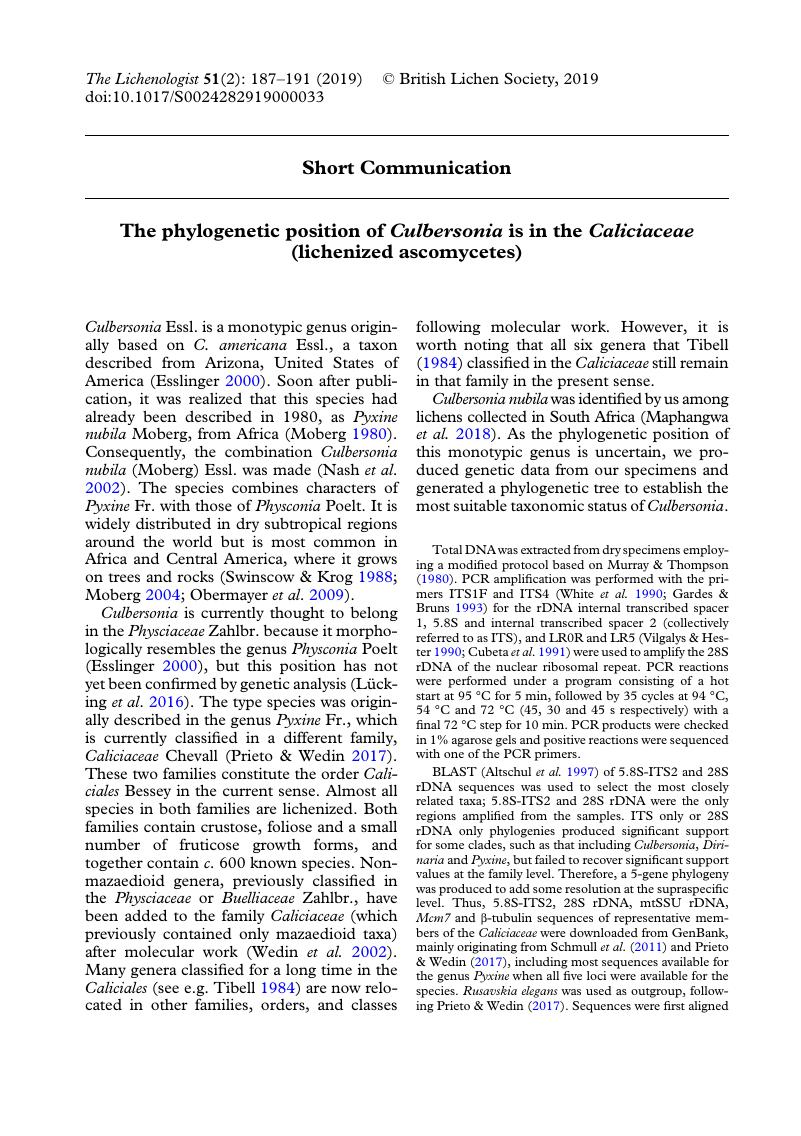Crossref Citations
This article has been cited by the following publications. This list is generated based on data provided by Crossref.
Fryday, Alan M.
Medeiros, Ian D.
Siebert, Stefan J.
Pope, Nathaniel
and
Rajakaruna, Nishanta
2020.
Burrowsia, a new genus of lichenized fungi (Caliciaceae), plus the new species B. cataractae and Scoliciosporum fabisporum, from Mpumalanga, South Africa.
South African Journal of Botany,
Vol. 132,
Issue. ,
p.
471.
Zhong, Qiuyi
Ai, Min
Worthy, Fiona Ruth
Yin, Ancheng
Jiang, Yi
Wang, Lisong
and
Wang, Xinyu
2023.
Rediscovery of Five Rinodina Species Originally Described from Southwest China and One New Species.
Diversity,
Vol. 15,
Issue. 6,
p.
705.
Fryday, Alan
Svoboda, Stanislav
Vondrák, Jan
Ward, Danielle A.
and
Struwig, Madeleen
2024.
Caloplaca tswaluensis (Teloschistales, Teloschistaceae): a new species from South Africa with plurilocular ascospores.
The Lichenologist,
Vol. 56,
Issue. 4,
p.
149.



